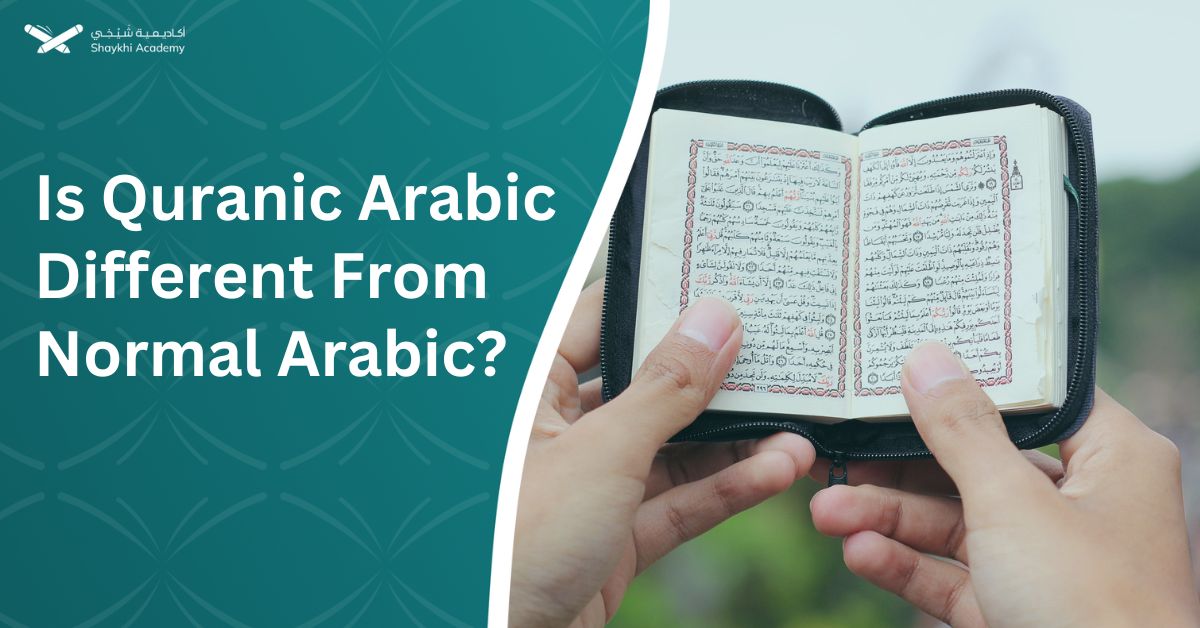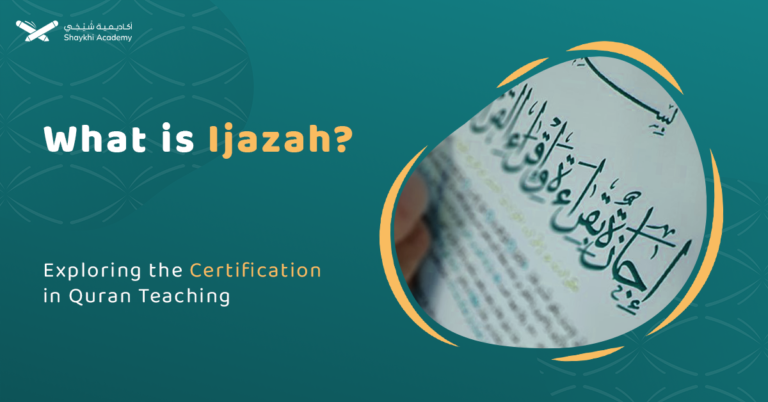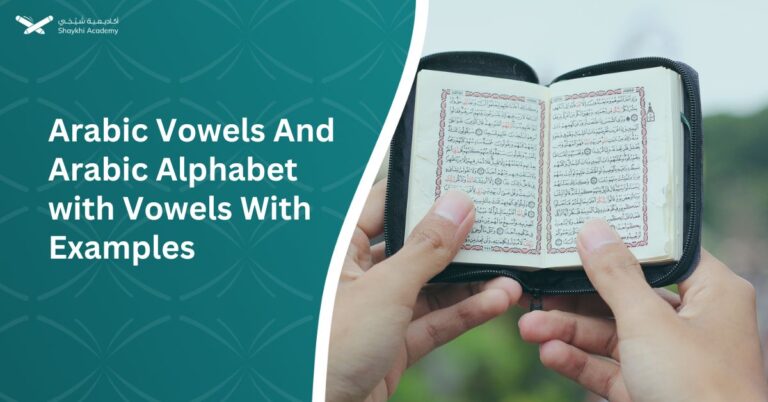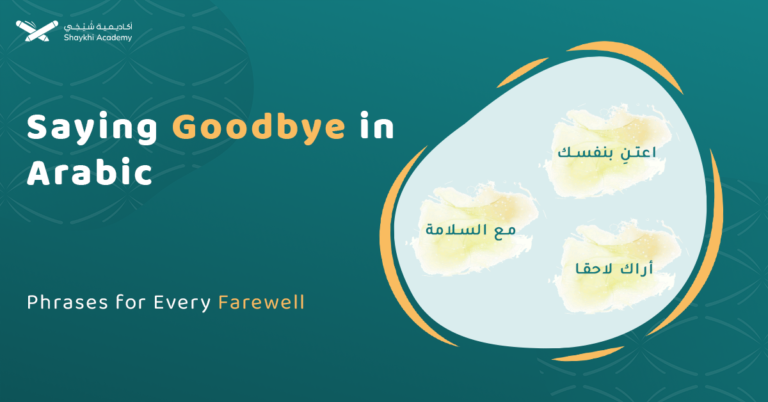Maybe you wonder about: Is Quranic Arabic different from normal Arabic? You’ve undoubtedly encountered both Modern Standard Arabic and Quranic Arabic if you’re trying to study Arabic. Both are offered in most Arabic language schools’ curricula. However, why? Which of the two should you study first, and what is the difference between the two? To discover, keep reading.
In this comprehensive exploration, we uncover the nuanced differences between Quranic Arabic, rooted in the divine revelations of over 1400 years ago, and MSA, the contemporary literary language of professional discourse. Additionally, we navigate through seven prominent Arabic dialects, illuminating the diverse linguistic landscapes that enrich Arabic language learning.
Is Quranic Arabic Different From Normal Arabic?
Yes, you will become confused with several of them if you decide to study Arabic, which will cloud your judgment when deciding which one to study. But it all depends on why you are studying.
Quranic Arabic, often referred to as classical Arabic, is distinguished by its difficult-to-understand writing style and is ideal for studying the Quran or religious and theological texts produced during Islamic history.
In contrast, MSA is ideal for studying contemporary texts—that is, publications produced after the turn of the 19th century—in addition to scholarly works, TV news, documentaries, and contemporary novels.
We shall go into further depth about the distinctions between Quranic Arabic and MSA in this essay. Continue reading.
Quranic Arabic Vs Modern Arabic
The main difference between Quranic Arabic and Modern Standard Arabic (MSA) lies in their origins and usage. Quranic Arabic, the language of the Quran revealed over 1400 years ago, preserves ancient terminology and occasionally deviates from grammatical norms for emphasis and eloquence, primarily used for reciting religious texts.
In contrast, MSA evolved from Quranic Arabic in the 19th century, incorporating foreign borrowings and generally adhering to grammatical norms, serving as the official literary language in professional contexts like politics, education, and media, and often acting as a bridge language among diverse Arabic speakers.
We discuss that in detail in the following table:
| Aspect | Quranic Arabic | Modern Standard Arabic (MSA) |
| Origin | Originated from the Quran, revealed to Prophet Muhammad more than 1400 years ago. | Evolved from Quranic Arabic, developed in the 19th century. |
| Terminology | Comparable to MSA, but some terms are slightly older and no longer used in MSA. | Generally similar to Quranic Arabic, but may include some foreign borrowings. |
| Syntax | Virtually the same in both. | Similar to Quranic Arabic in terms of sentence structure. |
| Grammatical Norms | The Quran may break some grammatical norms for emphasis and eloquence. | Generally follows grammatical norms without deviations. |
| Usage | Mainly used for reciting the Quran and religious texts. | Used in professional contexts such as politics, education, law, and media. |
| Symbol Usage | Special symbols used for correct pronunciation and emphasis. | Diacritical marks may not be commonly used. |
| Familiarity | Well-known among Muslims due to religious education. | Used by Arabic speakers but may require additional education. |
| Bridging Language | Not typically used as a “bridge language” between Arabic dialects. | Frequently employed as a bridge language among diverse Arabic speakers. |
This table provides a comparison between Quranic Arabic and Modern Standard Arabic (MSA) in various aspects such as origin, terminology, syntax, grammatical norms, usage, symbol usage, familiarity, and bridging language.
The Seven Arabic Local dialicts
There are several regional dialects of Arabic, and these dialects can differ greatly in vocabulary, grammar, and pronunciation. Although there are several Arabic dialects, the following are some of the more well-known regional varieties:
Arabic in Egypt
Speaking in Egypt, and since Egyptian media is so well-known throughout the Arab world, generally understood.
Arabic in the Levant
Said in Palestine, Syria, Jordan, and Lebanon. This dialect is distinguished by its distinct lexicon and gentle accent.
Arabic Gulf
Spoken in Saudi Arabia, Kuwait, Bahrain, Qatar, Oman, and the United Arab Emirates, among other Arabian Gulf nations. The conservative pronunciation and liberal use of loanwords from other languages, including English, are characteristics of this dialect.
Arabic Maghrebi
This dialect, which is spoken in Morocco, Algeria, Tunisia, and Libya, is distinguished by its distinct vocabulary and pronunciation that are derived from French and Berber languages.
Arabic in Iraq
This dialect, which is spoken in Iraq, has a distinct vocabulary and pronunciation that are affected by the history and culture of the nation.
Arabic in Sudan
This dialect, which is spoken in Sudan, is distinguished by its distinct vocabulary and pronunciation that are shaped by the topography and history of the nation.
Arabic for Yemen
This dialect, which is spoken in Yemen, is distinguished by its distinct vocabulary and pronunciation that are shaped by the topography and history of the nation.
All things considered, Arabic dialects can change greatly between geographical areas, and language learners should be cognizant of these variations when studying the language. To study all of the regional Arabic from local speakers, enroll in Arabic group sessions.
Unlock the Path to Quranic Mastery with Shaykhi Academy!
Are you seeking the finest Quranic education right from the comfort of your home? Look no further! Shaykhi Academy stands out as a premier online Quran learning platform, dedicated to providing exemplary education to both children and adults.
Why Choose Shaykhi Academy?
- Connect with highly qualified native tutors.
- Flexible scheduling to suit your busy lifestyle.
- Affordable classes tailored for all levels.
- Accessible from anywhere around the globe.
Discover Our Range of Courses:
- Arabic Noorani Qaida: Lay a solid foundation for Quranic studies.
- Online Quran Classes for Kids: Engaging lessons for lifelong learning.
- Tajweed Rules for Kids: Learn to recite with confidence.
- Quran Hifz for Kids: Step-by-step guidance to memorize the Quran.
- Quran for Adults: Introduce yourself to Quran reading and Tajweed rules.
- Online Arabic Courses: Master the language of the Quran.
- Islamic Studies: A wide range of topics related to Islam, including theology, law, Quranic studies, Hadith.
Don’t Miss Out on Your Chance to Excel!
Whether you’re a beginner or seeking advanced knowledge, Shaykhi Academy can guide you! Book your free trial now and make Ramadan 2024 your Quranic turning point!

Conclusion
The Arabic used in the Quran is called Quranic Arabic, and it is required to comprehend and recite the holy text. Conversely, modern standard Arabic is the most often spoken dialect in Arabic-speaking nations and is required for casual communication.
Given their similarities, you can select the Arabic language that best fits your learning preferences and objectives. And you may pick up the other one fast after you’ve mastered the first.
Shaykhi Academy offers lessons in Quranic Arabic and Modern Arabic. Start learning now. If you want to learn more about the differences between Quranic Arabic and Normal Arabic, then, the Shaykhi Academy team is responsible for fulfilling your desires, just contact us to know everything you want.

















































